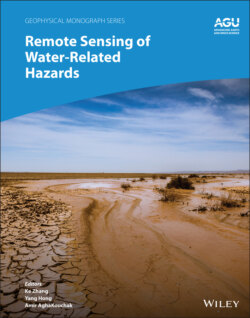Читать книгу Remote Sensing of Water-Related Hazards - Группа авторов - Страница 22
ABSTRACT
ОглавлениеPrecipitation is one of the most essential environmental variables in global water and energy cycles. Precipitation storms often trigger various natural hazards such as flash floods. The advance of satellite remote sensing provides valuable sources of global precipitation data, which have been widely used in hydrometeorological studies and hazard monitoring. Particularly, the Integrated Multi‐satellitE Retrievals for Global Precipitation Measurement (IMERG) produces the latest generation of satellite precipitation estimates and has been widely evaluated and applied since its release in 2014. It is acknowledged that satellite precipitation contains uncertainties varying with space and time. This work assesses the accuracy of the retrospective IMERG products in China and compares IMERG with nine satellite and reanalysis products to reveal the characteristics of modern precipitation data sets. We find that IMERG outperforms other products, except for Global Satellite Mapping of Precipitation (GSMaP), due to the deficiency of monthly‐scale gauge adjustment. Regarding snowfall, IMERG exhibits large underestimation in the whole China region compared with gauge and reanalysis data. The triple collocation analysis reveals that the performance of IMERG in snowfall estimation is still unsatisfying. Furthermore, IMERG Early and Final runs are applied in the early warning of flash floods in Yunnan Province, China, where flood hazards are common and destructive. IMERG could be better in monitoring floods at higher temporal resolutions (e.g., 1 h and 3 h) than the lower temporal resolution (e.g., daily). IMERG Early run has better timeliness but lower capability of capturing floods compared to IMERG Final run. The study is useful for both users and developers of satellite precipitation products.
